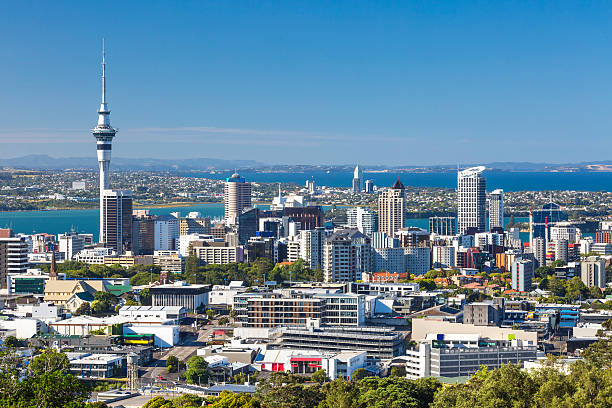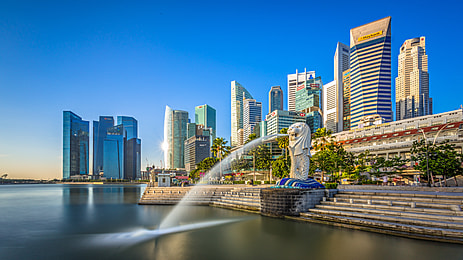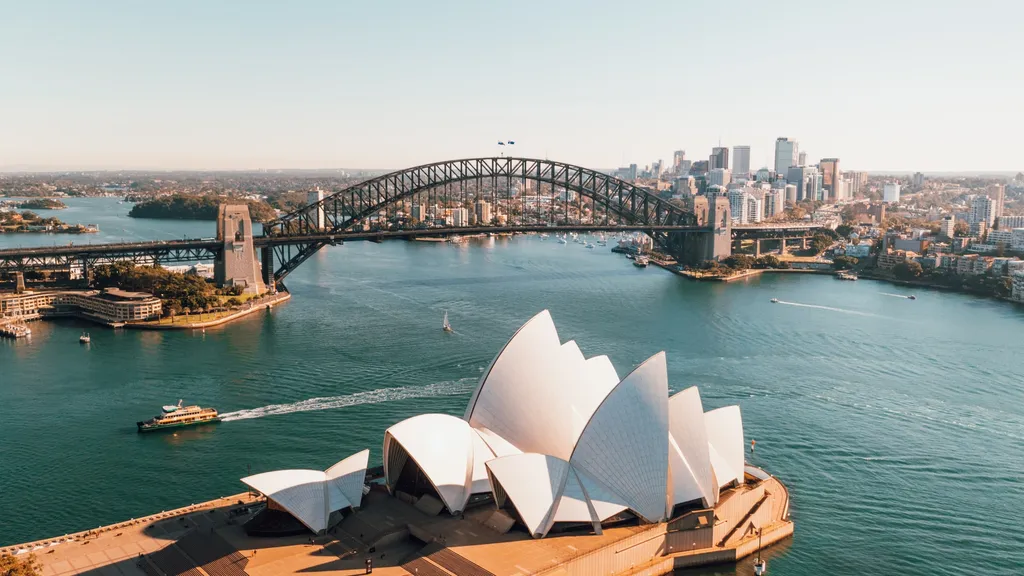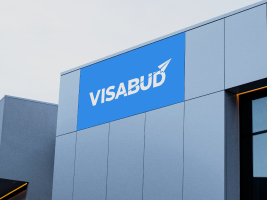Technology for Smarter Travel Experiences is revolutionizing how travel websites and blogs operate in today’s digital age. By integrating advanced tools and solutions, platforms like appoctet.com help travel brands deliver exceptional user experiences, streamline operations, and stay ahead in a competitive market.
Maintaining a vibrant travel site can be challenging when you’re not constantly on the go. However, it is entirely possible to keep your audience engaged and your content fresh, even from the comfort of your home. In this article, we’ll explore practical strategies to sustain your travel blog or website during periods of downtime. From leveraging past travel experiences to curating guest content and engaging with your audience in creative ways, these tips will help you continue to inspire and inform your readers, keeping your travel brand alive and thriving no matter where you are.
One effective approach to keeping your travel site active is to delve into the rich archive of your past adventures. Revisit and refresh older posts with new insights or additional information you’ve gained since your travels. Create detailed guides and how-tos based on your experiences, or write reflective pieces about what you learned and how you’ve grown as a traveller. Additionally, consider featuring travel news, destination spotlights, and cultural insights to provide value to your readers. By diversifying your content and offering a variety of engaging posts, you can maintain a dynamic and appealing travel site, even when you’re not exploring new destinations.
There are few steps to make your travel site sustain for long time :
- Leverage User-Generated Content.
- Diversify Content Formats.
- Offer Virtual Travel Experiences.
- Create Comprehensive Travel Guides and Tips.
- Engage and Build a Community and Collaborate with other travel
Leverage User-Generated Content
Leveraging user-generated content (UGC) is a powerful way to keep your travel site active and engaging even when you aren’t travelling. Here’s how to effectively incorporate (UGC) into your travel site. The list of (UGC) is to Encourage submissions, Host contests, The challenges, feature user content on your site, Engage with Contributors, Showcase UGC on Social Media, Use UGC for Marketing, and Incorporate UGC in Content Creation
- Encourage Submissions : Create a Submission Page: Set up a dedicated page on your site where readers can easily submit their travel stories, photos, and videos. Provide clear guidelines on what you’re looking for and how they can contribute.
- Social Media Campaigns : Run campaigns on social media platforms encouraging followers to share their travel experiences using a specific hashtag. Feature the best submissions on your site.
- Host Contests :
Photo and Story Contests Organise contests where readers can submit their best travel photos or stories. Offer small prizes or feature their work prominently on your site as incentives.
The Challenges: Weekly or Monthly Challenges:- Create recurring challenges, such as (Photo of the Week) or (Travel Story of the Month) to encourage regular submissions.
- Feature User Content on Your Site:
Dedicated Sections :- Create sections on your website specifically for user-generated content. This can include travel diaries, photo galleries, and video sections.
Guest Blog Posts :- Invite readers to write about their travel experiences. Provide them with a framework to ensure the content aligns with your site’s style and quality.
- Engage with Contributors
Acknowledge and Respond :- Always acknowledge submissions and respond to contributors. Show appreciation for their participation and encourage them to contribute more.
Create a Community :- Build a community around your travel site. Use forums or social media groups where contributors can share their content and interact with each other.
- Showcase UGC on Social Media
Share User Content :- Regularly share user-generated photos, videos, and stories on your social media platforms. Tag the contributors to give them credit and increase engagement.
Highlight Contributors :- Feature top contributors in special posts or stories to recognize their contributions and build a loyal following.
- Use UGC for Marketing
Testimonials and Reviews :- Collect and showcase testimonials and reviews from your readers. Highlight their positive experiences related to your site or travel resources.
Content for Promotions :- Use the best user-generated content in your promotional materials, newsletters, and marketing campaigns to showcase authentic travel experiences.
- Incorporate UGC in Content Creation
Inspirational Lists and Roundups :- Create posts that compile the best user-generated content, such as “Top 10 Reader Travel Photos” or “Best Reader Travel Stories.”
Collaborative Posts :- Combine multiple submissions into collaborative posts. For example, ask readers to share tips on a specific destination and compile these into a comprehensive guide.
Diversify Content Formats
A travel site is essential for engaging a broad audience and keeping your content fresh and dynamic. Here’s how to diversify content formats effectively. The list of diversified content formats includes Blog Posts and Articles, Videos, Podcasts, Infographics, Social Media, Email Newsletters, Ebooks and Guides, Webinars and Online Courses, and User-Generated.
- Blog Posts
A blog post is any article, news piece, or guide that’s published in the blog section of a website. A blog post typically covers a specific topic or query, is educational, and contains other media types such as images, videos, infographics, and interactive charts.
Travel Guides :- Write detailed guides for various destinations, including itineraries, local tips, and must-see attractions.
Personal Stories :- Share personal travel stories or guest stories from contributors to provide unique, authentic experiences.
- Videos
A program, movie, or other visual media product featuring moving images, with or without audio, that is recorded and saved digitally or on a videocassette: She used her phone to record a video of her baby’s first steps. Let’s stay at home and watch a video.
Vlogs :- Create travel vlogs showcasing destinations, experiences, and tips. Use platforms like YouTube or embed videos directly on your site.
Interviews :- Conduct interviews with locals, travel experts, or fellow travellers. These can be in the form of recorded video calls or in-person interviews.
Tutorials :- Produce how-to videos, such as packing tips, travel photography techniques, or cooking local dishes.
- Podcasts
A podcast is a digital medium consisting of audio episodes that relate to a specific theme.
Travel Stories :- Launch a podcast series where you share travel stories, either your own or from guests.
Expert Interviews :- Interview travel experts, bloggers, and locals to provide insights and tips.
Travel Tips : Create episodes focused on practical travel advice, such as budgeting, packing, and itinerary planning.
- Infographics
A collection of imagery, data visualisations like pie charts and bar graphs, and minimal text that gives an easy-to-understand overview of a topic.
Visual Guides :- Design infographics that provide visual travel guides, packing lists, or cultural tips.
Statistics :- Share interesting travel statistics and trends through infographics to make data engaging and easy to understand.
- Social Media Content
A collective term for websites and applications that focus on communication, community-based input, interaction, content-sharing, and collaboration.
Stories and Reels :- Use Instagram Stories, Facebook Stories, and TikTok to share quick, engaging content snippets.
Live Streams :- Host live Q&A sessions, virtual tours, or real-time updates from your travels.
- Email Newsletters
A type of email that has both text and media and is sent to a list of customers, prospects, and subscribers to keep them up to date on company or product news, tips, and developments.
Curated Content :- Send regular newsletters that include your latest blog posts, user-generated content, and exclusive travel tips.
Exclusive Offers :- Share special deals, exclusive content, or early access to new features or guides.
- Ebooks and Guides
An e-book is a book in digital format. Throughout history, books have been hand-scribed texts, mass-printed with movable type, read aloud as audiobooks, photocopied, purchased, borrowed, annotated, and indexed. And now books can be read online on a wide variety of devices anywhere, anytime.
Comprehensive Guides :- Create downloadable ebooks or guides on specific travel topics, such as budget travel, solo travel, or a detailed destination guide. Offer shorter guides or checklists as lead magnets to grow your email list.
- Webinars and Online Courses
A webinar is a live teaching session that offers a broad range of various topics. It is usually followed by a question-answer session where the participants can ask questions to the speaker. Online classes are e-learning that concentrate on a particular topic in-depth. Live online classes are more interactive.
Workshops :- Host webinars on topics like travel planning, travel photography, or cultural insights.
Courses :- Develop online courses covering in-depth travel topics, available for purchase or as part of a subscription model.
- User-Generated Content
User-generated content (UGC) is published information that an unpaid contributor provides to a website.
Reader Stories :- Feature user-submitted stories, photos, and videos regularly.
Contests and Challenges: Organise contests and challenges encouraging readers to contribute content, which you can feature on your site and social media.
Offer Virtual Travel Experiences
Offering virtual travel experiences is an excellent way to engage your audience and keep your travel site vibrant, even when you can’t travel yourself. Here are several strategies to create and share virtual travel experiences.
Choose the Right Platforms – Select platforms that best suit the type of virtual experience you want to offer, such as Zoom for webinars, YouTube for live streams, or specialised VR (virtual reality) 3D platforms.
Plan and Schedule -Create a content calendar to plan and schedule your virtual travel experiences. Promote these events in advance to build anticipation.
Collaborate with Experts – Partner with local guides, chefs, language instructors, and other experts to provide authentic and engaging experiences.
Invest in Quality – Use high-quality cameras, microphones, and other equipment to ensure a professional presentation.
Engage Your Audience – Encourage audience participation through live chats, question and answer sessions, and interactive elements.
Promote Widely – Use your website, social media channels, email newsletters, and other marketing tools to promote your virtual experiences.
Collect Feedback – After each virtual event, collect feedback from participants to improve future experiences.
Create Comprehensive Travel Guides and Tips
Creating comprehensive travel guides and tips is essential to maintaining a valuable travel site. Here’s a step-by-step approach to crafting detailed, informative, and engaging travel guides. The list of comprehensive travel guides and tips includes Select a Destination, Structure Your Guide, Detailed Sections, Practical Information, Itineraries, Visual Elements, and Engagement and Updates.
Select a Destination
Research :- Choose destinations that interest your audience. Use tools like Google Trends, social media, and travel forums to identify popular and trending locations.
Scope :- Decide whether your guide will cover a city, region, country, or specific attractions within a location.
Structure Your Guide
Introduction :- Provide an overview of the destination, including why it’s worth visiting and what makes it unique.
Getting There :- Include information on how to reach the destination, such as flights, trains, buses, and driving routes.
Best Time to Visit :- Discuss the ideal seasons or months to visit, considering weather, events, and peak tourist times.
Detailed Sections
Top Attractions :- List and describe the must-see sights and activities. Include historical landmarks, museums, parks, and unique experiences.
Accommodation Options :- Provide recommendations for different budgets, from luxury hotels to budget hostels and unique stays like boutique hotels or Airbnb.
Local Cuisine :- Highlight local foods and beverages to try, popular restaurants, street food spots, and any notable food tours.
Transportation :- Explain how to get around the destination, including public transport, car rentals, bike rentals, and walking routes.
Cultural Insights :- Offer information on local customs, traditions, language basics, and cultural etiquette.
Safety Tips :- Provide advice on staying safe, including areas to avoid, common scams, and health tips.
Practical Information
Budgeting :- Offer tips on managing expenses, and average costs for accommodations, meals, transportation, and activities.
Packing Tips :- Suggest what to pack based on the destination’s climate, activities, and local customs.
Visa and Entry Requirements :- Detail the necessary visas, entry requirements, and any specific documentation travellers need.
Itineraries
Customizable Plans:- Provide options for customising itineraries based on traveller preferences, such as adding a day trip or skipping certain attractions.
Insider Tips
Local Secrets :- Share lesser-known attractions, hidden gems, and off-the-beaten-path experiences.
Money-Saving Tips :- Offer advice on finding deals, free activities, and budget-friendly dining options.
Language Tips :- Include basic phrases and expressions in the local language to help travellers navigate more easily.
Visual Elements
Photos and Videos :- Use high-quality images and videos to make the guide visually appealing and engaging.
Maps :- Include interactive maps showing key locations, routes, and itineraries.
Engagement and Updates
Regular Updates :- Keep your guides current by regularly updating information on new attractions, changes in transportation, and other relevant updates.
Engage and Build a Community and Collaborate with Other Travel :-
Engaging and building a community around your travel site and collaborating with other travel enthusiasts and professionals can significantly enhance your site’s value and reach. Here’s how to do it effectively.
There are a few pointers for engaging and build a community and collaborating with other travel are :
- Create Interactive Platforms
- Discussion Forums :- Set up forums on your website where users can ask questions, share experiences, and discuss travel-related topics.
- Social Media Groups :- Create and manage groups on Facebook, LinkedIn, or other platforms where members can interact and share content.
- Host Online Events
- Webinars and Live :- Organise webinars or live Q&A sessions with travel experts, influencers, or yourself to discuss various travel topics.
- Virtual Meetups :- Arrange virtual meetups for your community members to interact, share stories, and network.
- Content Engagement
- User-Generated Content :- Encourage users to submit their travel stories, photos, and videos. Feature these on your site and social media.
- Polls and Surveys :- Use polls and surveys to gather opinions and feedback from your audience. Share the results and use the insights to improve your content and services.
- Exclusive Offers and Contests
- Member-Only Content : Provide exclusive content, such as detailed guides or special tips, to registered members of your community.
- Contests and Giveaways : Run contests and giveaways to keep your audience engaged. Offer travel-related prizes, such as gear, vouchers, or free consultations.
- Personalised Communication
- Email Newsletters : Send regular newsletters with updates, tips, and exclusive offers. Personalise the content based on user preferences and behaviours.
- Engage on Social Media : Actively respond to comments, messages, and mentions on your social media channels to foster a sense of community.
- Partner with Travel Bloggers and Influencers
- Guest Posts : Invite travel bloggers and influencers to write guest posts on your site. Offer to reciprocate by writing for their blogs.
- Social Media Takeovers : Arrange for travel influencers to take over your social media accounts for a day, sharing their experiences and engaging with your audience.
- Joint Ventures and Projects
- Collaborative Content : Work together on creating content such as travel guides, videos, or podcasts. Share the content across both parties’ platforms.
- Events and Webinars : Co-host events, webinars, or workshops with other travel experts or influencers to reach a broader audience.
- Affiliate and Referral Programs
- Affiliate Partnerships : Partner with travel-related businesses, offering them a platform to promote their products or services in exchange for a commission on sales.
- Referral Programs : Set up a referral program where you and your partners can mutually benefit from promoting each other’s sites and services.
- Networking and Community Engagement
- Industry Conferences and Meetups : Attend travel industry conferences, meetups, and networking events to build relationships with other professionals.
- Online Communities : Participate in online travel communities and forums to engage with other travel enthusiasts and professionals.
Conclusion :
Sustaining a travel site without actively travelling is not only feasible but can also be incredibly rewarding. By leveraging your past journeys, engaging with your audience, and diversifying your content, you can keep your readers inspired and your site vibrant. Remember, the essence of a travel blog lies in the passion for exploration and sharing that passion with others. With creativity and dedication, you can continue to cultivate a thriving travel community, proving that the spirit of adventure lives on, no matter where you are.







